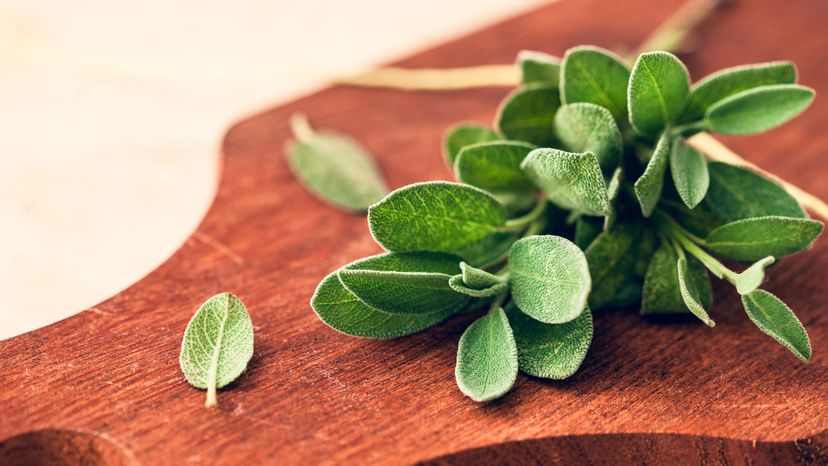
"Why should anyone die who has sage in their garden?" This old saying speaks to the many conditions that can be treated with sage.
The botanical name Salvia is from the Latin for "to save or to heal," as in the word "salvation." The Arabs associated sage with immortality. The praise for sage is not unfounded: It is often used as an herbal remedy for afflictions including gas, bloating, poor appetite and excessive sweating.
Advertisement
Uses for Sage
People have been cooking with sage for thousands of years: Recipes for sage pancakes have been dated to the 5th century B.C. Like most culinary herbs, sage is thought to be a digestive aid and appetite stimulant. You can use it to reduce gas in the intestines and, as it also is antispasmodic, to relieve abdominal cramps and bloating.
Sage contains phytosterols, reported to have a cooling action. In one study, using an infusion of the leaf reduced sweating by as much as half. Early and modern herbals list sage as a treatment for bright red, abundant uterine bleeding and for cramps that feel worse with heat applications and better with cold applications. You may also use sage to stop breast-milk production when weaning a child from breast-feeding.
The properties that help dry up milk, as well as sage's reported cooling action, also make it useful for treating diarrhea, colds, and excessive perspiration. It may be of value for menopausal hot flashes accompanied by profuse perspiration. Sage can dry up phlegm, and you can gargle with the tea to treat coughs and tonsil or throat infections.
Sage also has been recommended as a hair rinse for dandruff, oily hair, or infections of the scalp. The herb reportedly restores color to gray or white hair.
The essential oil of sage contains alpha- and beta-thujone, camphor, and cineole, which are antioxidant and antimicrobial agents. The volatile oils in sage kill bacteria, making the herb useful for all types of bacterial infections.
In the next section, you will learn how to prepare sage for herbal remedies and some of the potentially dangerous side effects.
To learn more about treating common medical conditions at home, try the following links:
- For an overview of all of our herbal remedies, go to the main page.
- To learn more about treating medical conditions at home, visit our main page.
- One of the best things you can do for your health and well being is to make sure you are getting enough of the vital nutrients your body needs. Visit our Vitamins page to learn more.
This information is solely for informational purposes. IT IS NOT INTENDED TO PROVIDE MEDICAL ADVICE. Neither the Editors of Consumer Guide (R), Publications International, Ltd., the author nor publisher take responsibility for any possible consequences from any treatment, procedure, exercise, dietary modification, action or application of medication which results from reading or following the information contained in this information. The publication of this information does not constitute the practice of medicine, and this information does not replace the advice of your physician or other health care provider. Before undertaking any course of treatment, the reader must seek the advice of their physician or other health care provider.Before engaging in any complementary medical technique, including the use of natural or herbal remedies, you should be aware that many of these techniques have not been evaluated in scientific studies. Use of these remedies in connection with over the counter or prescription medications can cause severe adverse reactions. Often, only limited information is available about their safety and effectiveness. Each state and each discipline has its own rules about whether practitioners are required to be professionally licensed. If you plan to visit a practitioner, it is recommended that you choose one who is licensed by a recognized national organization and who abides by the organization's standards. It is always best to speak with your primary health care provider before starting any new therapeutic technique.
Advertisement